Wildlife watching is a thrilling activity that allows you to connect deeply with nature. Observing animals in their natural habitats provides unique insights into their behaviors and ecosystems.
However, ensuring a successful and enjoyable experience requires proper preparation. The right equipment not only enhances your viewing pleasure but also ensures your safety and comfort throughout the adventure.
Proper preparation involves a combination of visual aids, comfortable attire, and safety measures. Each piece of gear plays a pivotal role in making your wildlife-watching trip enjoyable and productive.
With the right tools, you can observe animals from a safe distance, stay comfortable in various weather conditions, and be prepared for any unexpected situations.
Additionally, having the right resources at your fingertips can significantly enhance your understanding and appreciation of the wildlife you encounter.
From identifying species to recording your observations, being well-prepared turns a simple outing into an enriching experience. Let’s explore the key items that contribute to a successful wildlife-watching trip.
Importance Of Proper Gear For Wildlife-Watching Trip
Having the right gear is crucial for a successful wildlife-watching trip. Proper equipment ensures your safety, comfort, and ability to fully enjoy the experience.
When you’re well-prepared, you can focus on observing animals without worrying about discomfort or potential hazards. Good gear can help you navigate different terrains and weather conditions, making your trip more enjoyable and less stressful.
Comfortable and durable clothing protects you from the elements and allows you to move freely. Proper footwear prevents injuries and provides stability on uneven ground.
High-quality viewing equipment lets you see animals from a distance without disturbing them, enhancing your overall experience. Additionally, having practical accessories can make long hours in nature more pleasant and convenient.
The right gear also plays a vital role in safety. Essential items help you handle minor injuries, avoid insect bites, and protect against sun exposure. This preparation reduces risks and ensures you can fully immerse yourself in the beauty of nature.
Top 10 Essential Gear For A Successful Wildlife-Watching Trip
Essential gear is crucial for a successful wildlife-watching trip. Proper equipment ensures safety, comfort, and enhanced viewing, allowing you to enjoy observing animals in their natural habitats fully. Let’s explore the must-have items for your adventure.
1. Camera

A good camera is essential for capturing the magic of wildlife in their natural habitats. When choosing a camera for wildlife watching, it’s important to consider features like zoom capability, image stability, and fast autofocus.
These features help you take clear and vibrant pictures from a safe distance without disturbing the animals.
A camera with a powerful zoom lets you see details like the pattern of feathers on a bird or the fur on a fox. Image stabilization is crucial for keeping your photos sharp, especially when you’re moving or in low light.
Fast autofocus ensures you don’t miss a moment, as wildlife can move quickly and unexpectedly.
Investing in a reliable camera enhances your wildlife-watching experience by allowing you to capture stunning images that you can cherish and share.
Whether you’re an amateur or a seasoned photographer, the right camera makes all the difference.
2. Tripod Or Monopod
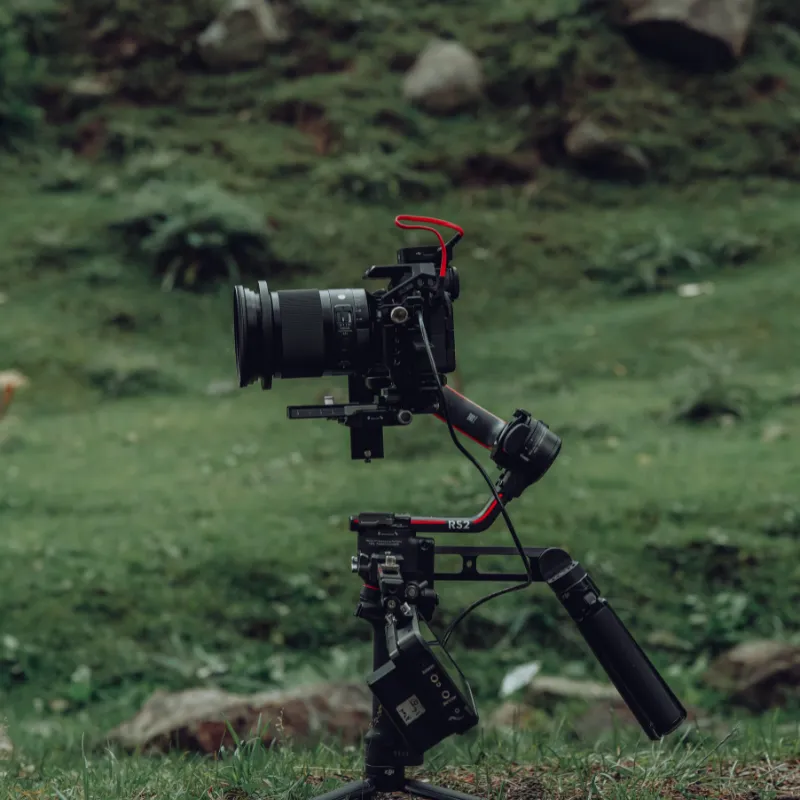
A tripod or monopod is essential for stabilizing cameras or spotting scopes during wildlife watching. These tools provide the stability needed for clear, sharp images, especially at high magnifications or in low-light conditions.
A tripod offers maximum stability, ideal for long sessions where you might be observing or photographing stationary wildlife from a fixed location. It frees your hands, reduces fatigue, and allows for precise adjustments.
A monopod, on the other hand, is more portable and quicker to set up. It provides moderate stability and is perfect for situations where you need to move frequently or traverse uneven terrain.
Both tripods and monopods come in lightweight, compact designs, making them easy to carry along on your adventures.
3. Binoculars
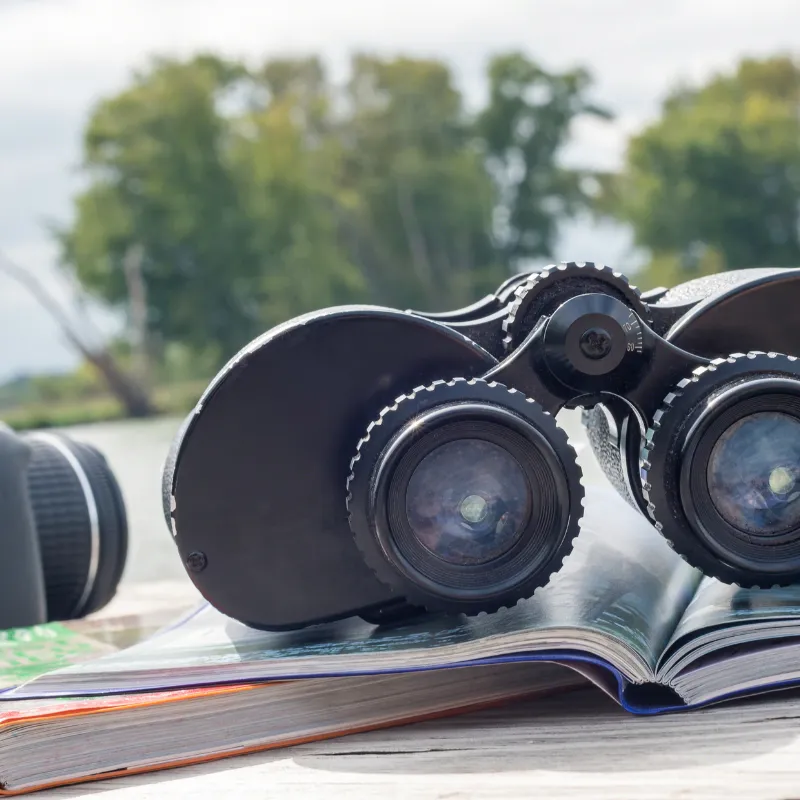
Binoculars are a must-have for any wildlife watcher. They bring distant animals close, allowing you to observe their behaviors without getting too near and disturbing them. When selecting binoculars, focus on magnification, lens quality, and ease of use.
Good magnification provides clear, detailed views of wildlife, while high-quality lenses ensure bright and sharp images, even in low light conditions.
Lightweight and easy-to-handle binoculars enhance your experience, letting you watch for longer without fatigue. Waterproof and fog–proof features are also beneficial, as they protect your binoculars in various weather conditions.
Investing in a great pair of binoculars enriches your wildlife-watching adventures. It allows for intimate glimpses into the natural world, helping you to see and appreciate the beauty of wildlife safely and clearly.
3. Spotting Scope

A spotting scope is a crucial tool for wildlife watchers who want to observe creatures from a great distance with clarity and detail.
Unlike binoculars, spotting scopes offer higher magnification levels, which makes them perfect for viewing animals that are far away or smaller in size, like birds or distant mammals.
When choosing a spotting scope, consider factors such as the scope’s optical quality, magnification range, and the field of view.
A scope with superior optics provides clearer and brighter images, essential for early morning or late evening observations.
The magnification range should be high enough to observe fine details but versatile enough to allow for wider views when needed.
4. Clothing

Choosing the right clothing is key for a comfortable wildlife-watching experience. Wear layers that you can add or remove as the temperature changes.
Fabrics should be breathable to keep you cool and moisture-wicking to draw sweat away from your body. Opt for colors that blend with the environment, like greens, browns, and tans, to avoid startling the wildlife.
Durable materials that resist tears and snags are essential when moving through rough terrain.
Also, consider clothing with UV protection and insect-repellent properties for additional safety and comfort. Proper attire not only enhances your experience but also helps you stay focused on enjoying the natural world around you.
Recommended Wildlife Clothing
- Tropical Forests: Opt for lightweight, breathable fabrics to stay cool in humid conditions. Long sleeves and pants protect against insect bites and scratches from vegetation.
- Mountainous Areas: Layer your clothing to adjust to temperature changes. Include a waterproof and windproof jacket for sudden weather shifts.
- Temperate Forests: Choose moisture-wicking fabrics that dry quickly and layers to adjust for cool mornings and warmer afternoons. Light rain gear is also advisable for unexpected showers.
Camouflage Clothing Benefits
Camouflage clothing is highly recommended for wildlife watching because it helps you blend into the natural surroundings, making it less likely for animals to notice your presence. This increases your chances of observing wildlife behavior undisturbed. Camo attire minimizes visual disruptions and can be crucial for getting closer to wildlife without startling them.
5. Footwear

Proper footwear is essential for a successful wildlife-watching adventure. The right shoes can make the difference between a comfortable excursion and a painful one. When choosing footwear, consider the terrain you’ll be exploring.
Waterproof boots are ideal for wet areas and provide protection against moisture and mud. For rugged terrains, such as rocky paths or mountain trails, choose boots with good ankle support and aggressive tread patterns to prevent slips and falls.
Breathable materials are key for warm environments, allowing air circulation to keep feet cool. Additionally, lightweight shoes are beneficial for long walks, reducing fatigue.
Always prioritize durability and comfort, ensuring your footwear can withstand the natural elements while keeping your feet protected and comfortable throughout your journey. With the right shoes, you can focus more on the wildlife around you and less on where you step.
6. Field Guides And Apps

Field guides and apps are invaluable tools for wildlife watchers, enhancing both the learning and observation experiences.
Physical field guides offer detailed information about various species, including their habits, habitats, and identifying features. They are particularly useful for quick reference in areas with no digital connectivity.
On the other hand, apps bring a modern twist to wildlife watching.
They often include interactive features like audio clips of animal sounds, high-resolution images, and GPS functionalities to mark sightings. Some apps also allow you to contribute to citizen science projects by logging your observations.
Both field guides and apps help you identify species quickly and accurately, enriching your understanding of the ecosystem you’re exploring.
Whether you prefer the tactile feel of a book or the convenience of digital information, incorporating these resources into your wildlife watching gear ensures a more informed and fulfilling adventure.
7. Water And Snacks
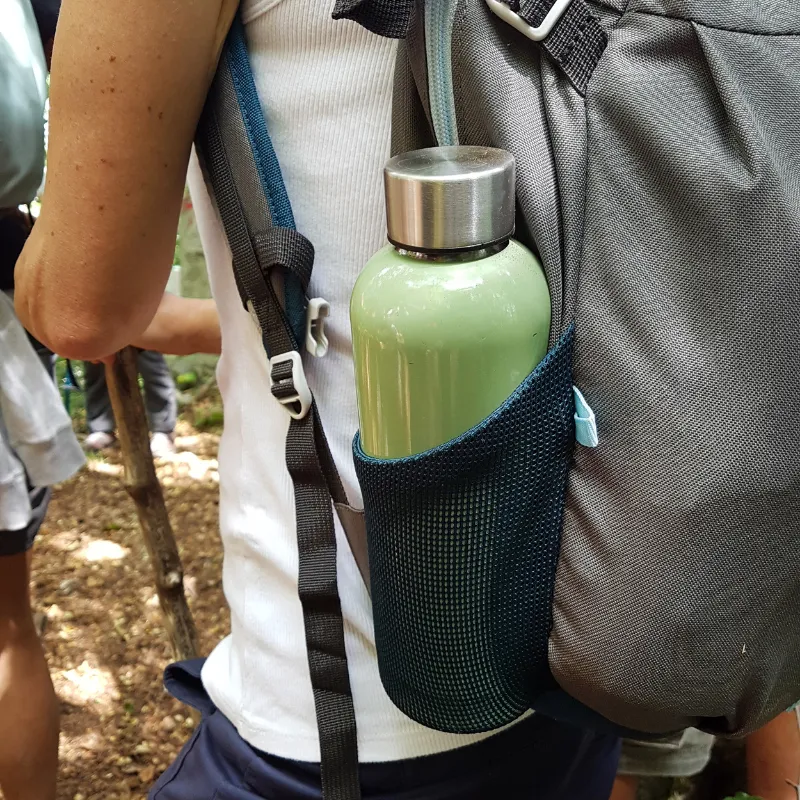
Staying hydrated and energized is essential during wildlife watching, making water and snacks crucial components.
Always carry a reusable water bottle or hydration pack, especially in warmer climates or during longer excursions. This ensures you stay hydrated, which is vital for maintaining focus and energy.
For snacks, opt for non-perishable, energy-dense options like trail mix, nuts, energy bars, and dried fruit. These provide a quick energy boost without being too heavy or requiring preparation.
Choose snacks that are easy to eat on the go and won’t leave a lot of waste behind, keeping your impact on the environment minimal.
Packing adequate water and snacks not only keeps you fueled and alert but also enhances your overall experience, allowing you to spend more time observing wildlife without discomfort or distractions.
This preparation is key to a successful and enjoyable wildlife-watching trip.
9. Backpack
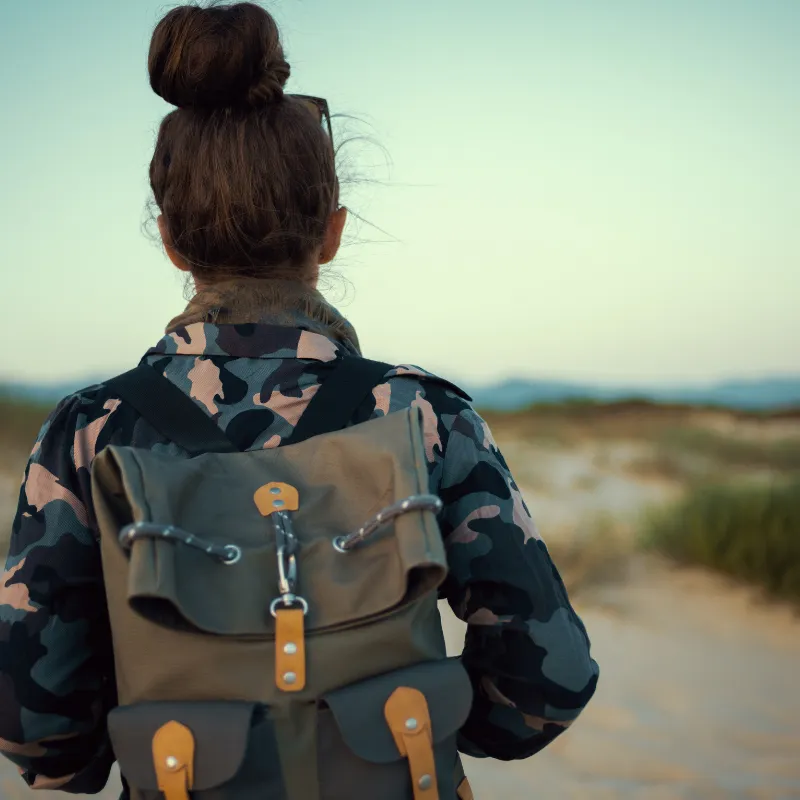
A good backpack is a must-have for any wildlife watcher. It acts as your portable base of operations, holding all your essential gear securely while you explore.
When choosing a backpack, consider size and compartments. You need enough space to carry your camera, binoculars, field guides, snacks, and hydration, but it shouldn’t be so bulky that it becomes cumbersome.
Look for backpacks with multiple compartments for easy organization and quick access to frequently used items.
Comfort is also crucial—opt for a backpack with padded straps and a supportive back panel to minimize strain during long treks.
Water-resistant materials are a plus, protecting your equipment from sudden rain showers.
Additionally, choose a backpack with a subtle color that blends into your surroundings. This helps maintain a low profile, keeping the focus on wildlife and not on you.
With the right backpack, you can keep all your wildlife-watching gear handy and secure as you venture into nature.
10. First Aid Kit
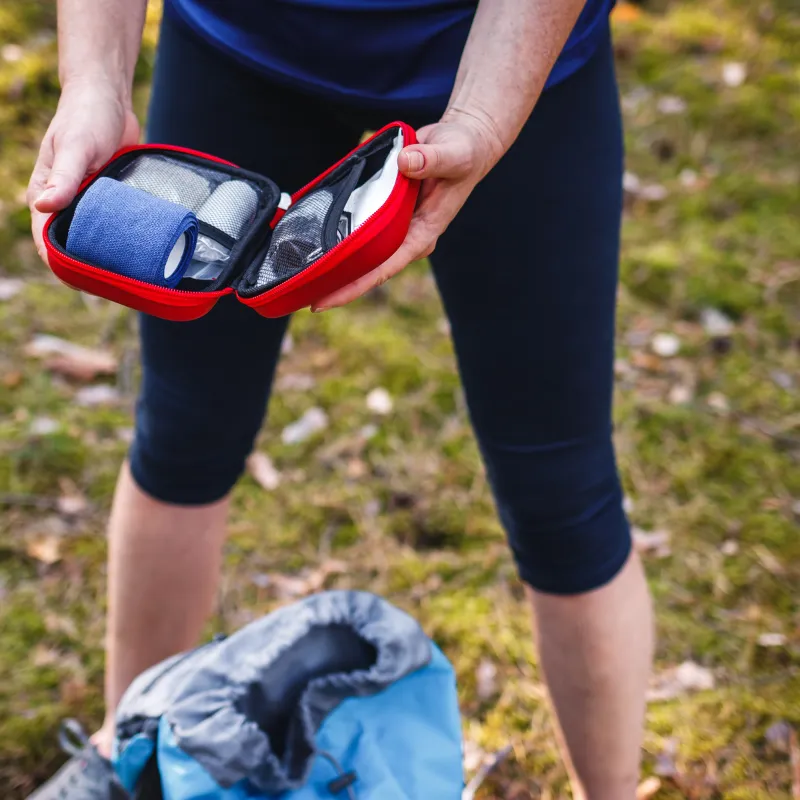
A first aid kit is essential for any wildlife-watching trip, ensuring you’re prepared for any minor injuries or emergencies. It should include basic supplies like bandages, antiseptics, and pain relievers, tailored to the nature of your outing.
Having these items on hand not only provides peace of mind but also boosts safety, allowing you to handle unexpected situations swiftly and effectively.
Important Of First Aid Kit
- Prompt Response: Treat cuts, stings, or sprains immediately to prevent infection or worsening.
- Essential for Remote Areas: Medical help may be far away; a first aid kit provides crucial support until you can get professional care.
- Tool for Group Safety: When traveling in groups, having a kit ensures that you can assist others in need, enhancing group safety.
Comfort Items
Comfort items are crucial for enhancing your wildlife-watching experience. An overview of some comfort items is given below.
- Sunscreen: Sunscreen is essential to protect your skin from harmful UV rays, especially during long periods outside. Opt for a broad-spectrum sunscreen with a high SPF to ensure you are covered throughout the day.
- Insect repellent: Insect repellent keeps bothersome bugs at bay. Choose a repellent with DEET or a natural alternative like eucalyptus oil to prevent bites from mosquitoes and ticks, which can carry diseases.
- Hat: A wide-brimmed hat provides dual benefits: it shields your face and neck from the sun and helps reduce glare, improving your visibility and comfort.
Conclusion
Equipping yourself with the right wildlife-watching gear is fundamental for a successful and enjoyable outdoor adventure.
From cameras and binoculars for enhanced viewing to comfortable clothing and sturdy footwear for navigating various terrains, each item plays a pivotal role.
Additionally, including essential comfort items and a well-stocked first aid kit ensures your safety and well-being.
By preparing thoroughly, you can immerse yourself fully in the beauty of nature and the thrill of wildlife observation.

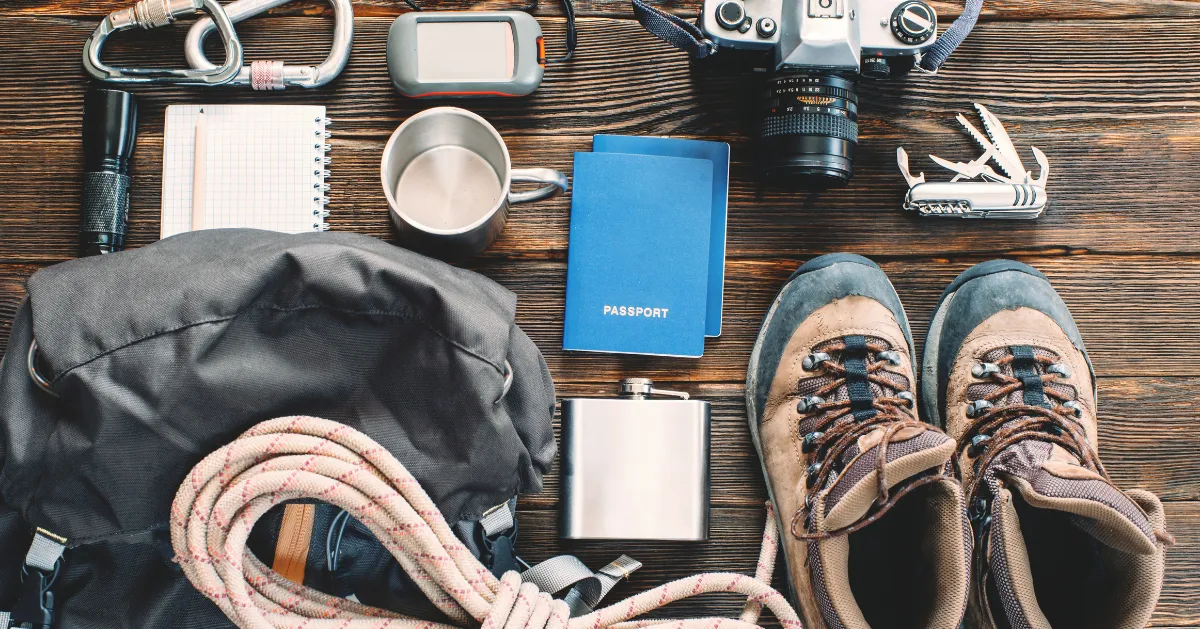
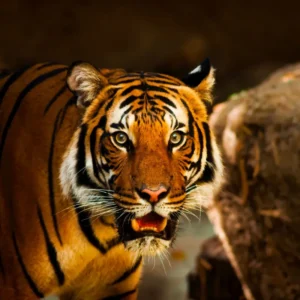


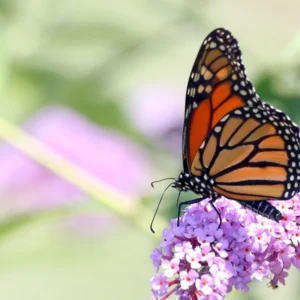


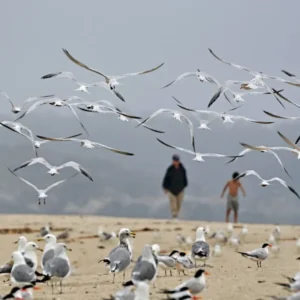
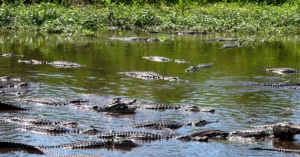
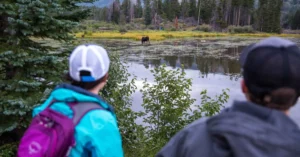
3 thoughts on “10 Essential Wildlife Watching Gear To Make Your Wildlife Trip Better”
Really appreciated the section about the importance of proper clothing for wildlife watching, Julia! It’s super easy to overlook, but it makes such a difference in comfort and how close you can get to animals without disturbing them.
Totally agree with Lexi and Julia on this! Proper attire not only respects wildlife but also ensures your safety. It’s crucial for anyone getting into this hobby.
What’s the best camo pattern for early morning bird watching? Any thoughts, Lexi or others?